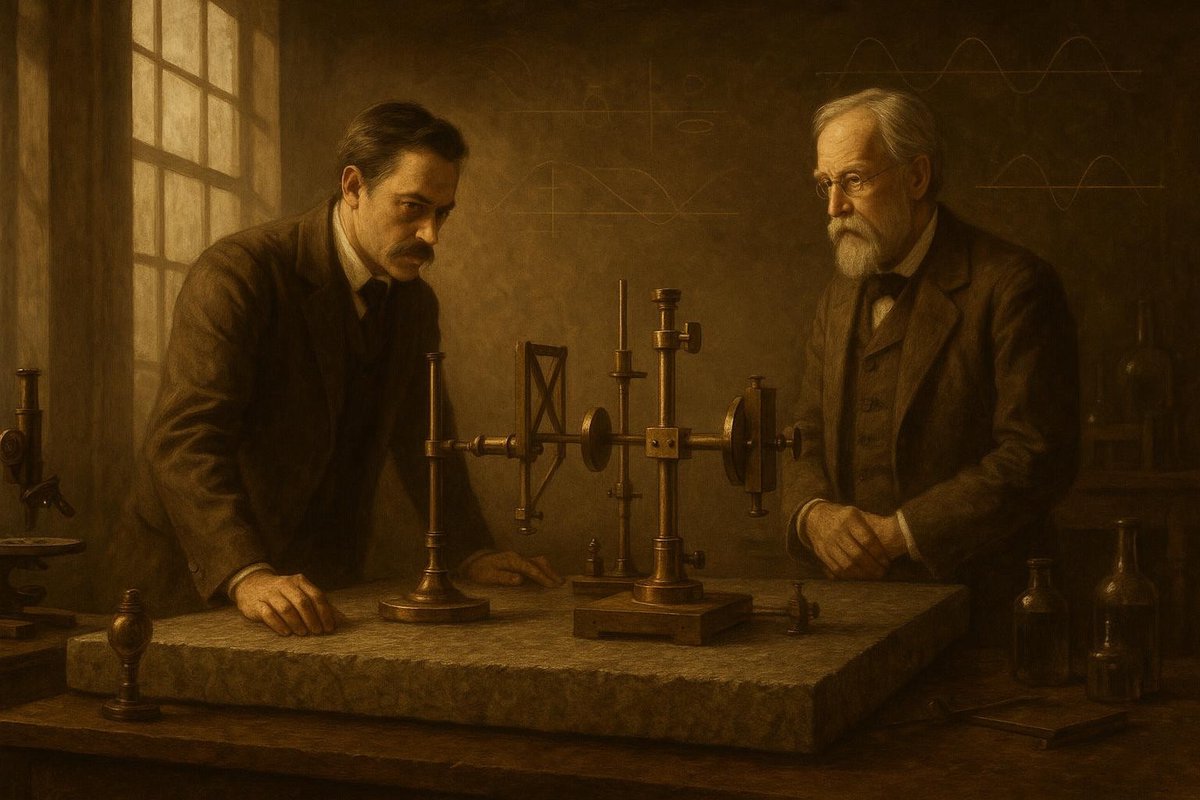
Unpacking the Question: What Were They Trying to Prove?
What is light really traveling through? This might sound like a simple question, but it puzzled the greatest minds in science for centuries. The prevailing theory before the 20th century was the existence of a mysterious medium called ‘ether’ — a substance thought to permeate space and carry light waves, much like air carries sound.
Interestingly, many believed ether was everywhere, yet no one had convincingly demonstrated its presence. The Michelson-Morley Experiment, conducted in 1887, aimed to detect ether and confirm its influence on light. So, how did they try to achieve this?
- They designed an interferometer capable of measuring tiny differences in light speed.
- Positioned it on a massive granite slab to minimize vibrations.
- Conducted the experiment multiple times at different times of the day and year.
The logic was simple: if ether existed, the Earth’s motion through it would create a detectable ‘ether wind,’ changing the speed of light depending on the Earth’s direction of movement.
Surprising Facts: The Experiment’s Unexpected Outcome
It was July 1887 in Cleveland, Ohio, when Albert A. Michelson and Edward W. Morley carefully adjusted their interferometer, hoping to catch this elusive ether wind. What they discovered, however, was nothing short of revolutionary: there was no difference in the speed of light.
- Result: No evidence of ether wind was detectable.
- Reactions: The scientific community was both baffled and excited.
- Impact: Prompted a re-evaluation of existing theories about light and motion.
This null result was surprising because it defied the expectations grounded in classical physics. It was akin to discovering that a phantom menace everyone believed in simply didn’t exist. Could it mean that ether wasn’t real at all?
As time went on, the implications of this experiment laid the groundwork for a major scientific shift. Albert Einstein later cited this work as part of the inspiration for his theory of relativity, which posited that the speed of light is constant.
What Science Says: Interpreting the Results
The results of the Michelson-Morley Experiment spurred a flurry of scientific debate and exploration. If not ether, then what? How could light travel through the vacuum of space? Here’s where the beauty of scientific inquiry lies.
- Einstein’s Theory: Proposed that light’s speed is constant, independent of any medium.
- Paradigm Shift: Required a new understanding of space and time.
- Philosophical Implications: Challenged deterministic views of the universe.
The experiment suggested not just a gap in understanding but a complete conceptual overhaul. Einstein’s special relativity, introduced in 1905, offered a framework where light doesn’t need a medium — fundamentally altering how we perceive motion and introducing the idea of spacetime.
This experiment and its interpretation led to profound philosophical questions about the nature of reality itself. Was the universe more abstract than tangible, more mathematical than material?
What It Means for Us: The Legacy of a Null Result
While the Michelson-Morley Experiment might not have detected ether, its legacy is monumental. It reminds us of the power of questioning assumptions and the value of a negative result in science.
- Scientific Method: Highlights the importance of experimental validation.
- Legacy: Paved the way for modern physics and relativity.
- Influence: Continues to inspire critical thinking and innovation.
By proving something wasn’t there, Michelson and Morley helped unlock a new understanding of the universe. Their work is a testament to curiosity and persistence, proving that sometimes asking the right question is more important than finding an immediate answer.
The findings changed not just physics but the way we perceive reality itself, teaching us that science is not just about discovery but about the constant pursuit of understanding.
Fuel Someone Else’s Curiosity
Isn’t it fascinating how a failed search for ether led to revolutionary scientific revelations? If this tale of scientific detective work piqued your interest, why not share it with a friend or discuss it over coffee? Science thrives on curiosity, and who knows what breakthrough your conversation might spark next!

Leave a Reply